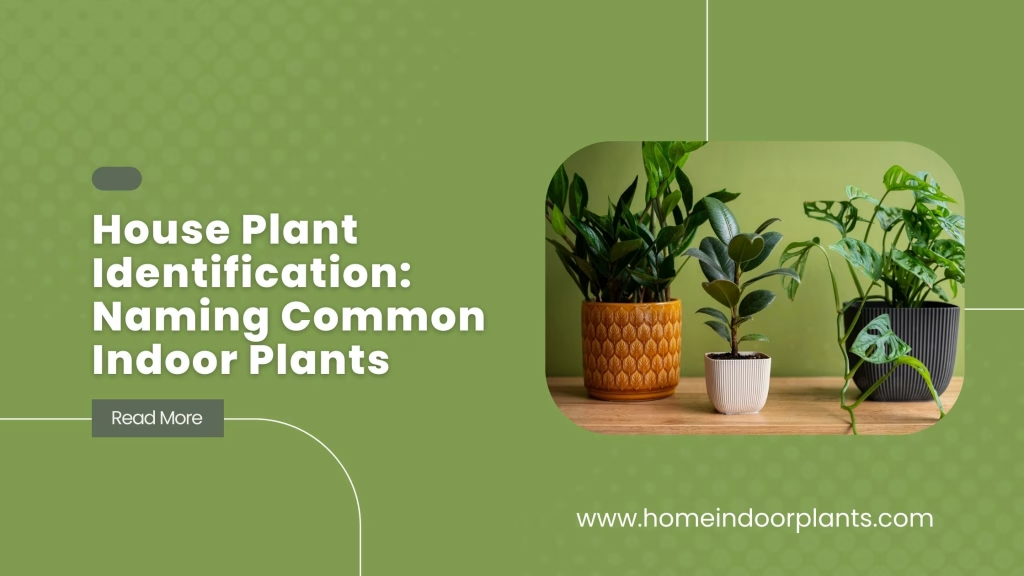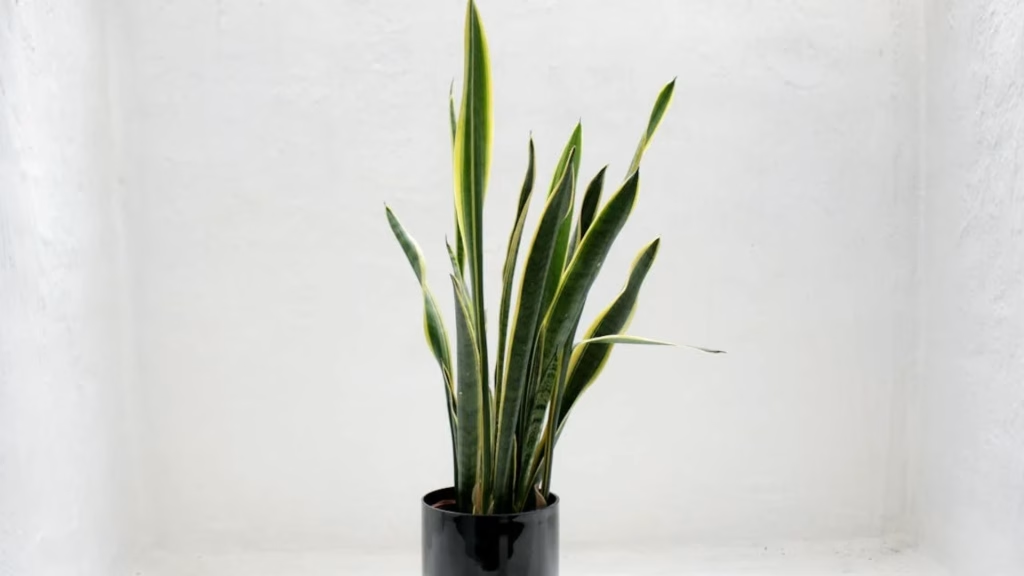Table of Contents
House Plant Identification: Spotting and Naming Common Indoor Plants
House plants have become an essential part of modern interior decor, bringing a touch of nature indoors. With the myriad of plants available, it can sometimes be challenging to identify and name the various species gracing your home. Understanding house plant identification is crucial for proper care and maintenance, ensuring your green companions thrive. This guide will help you spot and name some of the most common indoor plants, making you a more informed and confident plant parent.

Why House Plant Identification is Important
Identifying your house plants accurately is the first step in providing them with the appropriate care. Each plant species has unique needs in terms of light, water, humidity, and nutrients. By recognizing your plants, you can tailor your care routine to meet their specific requirements, ultimately leading to healthier, happier plants.
Common Indoor Plants and How to Identify Them
1. Fiddle Leaf Fig (Ficus lyrata)

Identification Features:
- Large, violin-shaped leaves with prominent veins.
- Leaves are dark green and leathery.
- The plant can grow tall, making it a popular choice as a statement plant.
Care Tips:
- Prefers bright, indirect light: This means the plant should be placed in a spot where it can receive plenty of light without being exposed to direct sunlight. Direct sunlight can cause the leaves to scorch. Ideal locations are near windows with sheer curtains or in rooms that are naturally well-lit but not exposed to direct sun rays.
- Water when the top inch of soil is dry: Check the soil moisture by inserting your finger about an inch deep into the soil. If it feels dry, it’s time to water. Ensure that the plant’s pot has good drainage to prevent water from pooling at the bottom.
- Requires high humidity and regular dusting of leaves: Fiddle leaf figs thrive in humid environments. Increase humidity by misting the leaves regularly or using a humidifier. Dust the leaves periodically with a damp cloth to keep them clean and allow for better photosynthesis.
2. Snake Plant (Sansevieria trifasciata)

Identification Features:
- Long, upright, sword-like leaves.
- Leaves are dark green with lighter horizontal stripes.
- Some varieties have yellow edges on the leaves.
Care Tips:
- Thrives in low to bright indirect light: Snake plants are very versatile in their lighting needs. They can survive in low light conditions, making them suitable for dimly lit rooms, but they also thrive in brighter spots as long as they are not exposed to direct sunlight, which can scorch their leaves.
- Water sparingly, allowing soil to dry out between waterings: Snake plants are drought-tolerant and prefer to be on the dry side. Overwatering can lead to root rot. Allow the soil to dry out completely before watering again.
- Tolerates low humidity and neglect: This plant is ideal for beginners or those who travel frequently, as it doesn’t require frequent care or high humidity levels.
3. Monstera Deliciosa

Identification Features:
- Large, glossy leaves with distinctive splits and holes (fenestrations).
- The plant has a vining habit and can grow quite large.
- Often called the “Swiss Cheese Plant.”
Care Tips:
- Prefers bright, indirect light: Place the monstera near a window where it can receive plenty of filtered sunlight. Direct sunlight can be too intense and may cause the leaves to burn.
- Water when the top inch of soil is dry: Regularly check the soil moisture and water when it feels dry to the touch. Monstera plants prefer slightly moist soil but should not be left in standing water.
- Benefits from regular misting and high humidity: These plants thrive in humid conditions. Mist the leaves frequently or use a humidifier to maintain the desired humidity level. High humidity helps to replicate their natural tropical environment.
4. Peace Lily (Spathiphyllum)

Identification Features:
- Dark green, glossy leaves that are lance-shaped.
- Produces white, hood-like flowers called spathes.
- Flowers typically bloom in the spring.
Care Tips:
- Prefers low to bright indirect light: Peace lilies are adaptable to various lighting conditions but do best in medium to low light. Avoid direct sunlight as it can damage the leaves and flowers.
- Keep soil consistently moist but not waterlogged: Peace lilies prefer consistently moist soil, so water them regularly. However, ensure that the pot has proper drainage to prevent root rot.
- Enjoys high humidity and regular misting: These plants thrive in humid environments. Increase humidity by misting the leaves regularly or placing the plant on a tray filled with pebbles and water.
5. Spider Plant (Chlorophytum Comosum)

Identification Features:
- Long, arching leaves that are green with white stripes.
- Produces small white flowers and plantlets (baby plants) on long stems.
- Plantlets can be propagated easily.
Care Tips:
- Thrives in bright, indirect light but tolerates low light: Spider plants do best in bright, indirect light but are also capable of surviving in lower light conditions. They can be placed in a variety of locations around the home.
- Water when the top inch of soil is dry: Allow the soil to dry out slightly between waterings. Spider plants prefer evenly moist soil but can tolerate occasional drying out.
- Benefits from occasional fertilizing during the growing season: Feed the plant with a balanced liquid fertilizer every 2-4 weeks during the spring and summer to encourage healthy growth.
6. Pothos (Epipremnum aureum)

Identification Features:
- Heart-shaped leaves that are green with variegation (white, yellow, or light green streaks).
- Vining habit, making it ideal for hanging baskets or trailing from shelves.
- Leaves are waxy and somewhat thick.
Care Tips:
- Prefers bright, indirect light but can tolerate low light: Pothos plants are very adaptable and can grow in a variety of light conditions, from low to bright indirect light. Avoid direct sunlight as it can cause leaf burn.
- Water when the top inch of soil is dry: Check the soil moisture regularly and water when it feels dry to the touch. Pothos prefers its soil to dry out slightly between waterings.
- Tolerates low humidity and is relatively low maintenance: This plant is easy to care for and can handle varying humidity levels. It’s a great choice for beginners or busy individuals.
7. ZZ Plant (Zamioculcas zamiifolia)

Identification Features:
- Waxy, smooth leaves that are dark green and grow in pairs along a stem.
- Leaves are oval-shaped and have a glossy appearance.
- The plant has a rhizomatous root system.
Care Tips:
- Thrives in low to bright indirect light: ZZ plants are extremely versatile and can tolerate low light conditions, making them ideal for offices and darker rooms. They also do well in bright, indirect light.
- Water sparingly, allowing soil to dry out completely between waterings: ZZ plants store water in their rhizomes, so they don’t need frequent watering. Allow the soil to dry out completely between waterings to prevent root rot.
- Tolerates low humidity and low light conditions: This plant is perfect for low-maintenance environments, as it doesn’t require high humidity or frequent attention.
8. Aloe Vera

Identification Features:
- Thick, fleshy leaves that are green with white speckles.
- Leaves have serrated edges and contain a clear gel.
- The plant grows in a rosette form.
Care Tips:
- Prefers bright, direct light: Aloe vera thrives in bright, sunny locations. Place it near a south- or west-facing window where it can receive several hours of direct sunlight each day.
- Water deeply but infrequently, allowing soil to dry out between waterings: Aloe vera plants prefer to be kept on the dry side. Water thoroughly when the soil is completely dry, and ensure the pot has good drainage.
- Benefits from well-draining soil and low humidity: Use a cactus or succulent soil mix to provide excellent drainage. Aloe vera doesn’t require high humidity and can tolerate dry indoor air.
9. Rubber Plant (Ficus elastica)

Identification Features:
- Large, thick leaves that are dark green and glossy.
- Leaves have a prominent central vein and can have a reddish tint when young.
- The plant can grow quite tall with proper care.
Care Tips:
- Prefers bright, indirect light: Rubber plants do best in bright, indirect light. Avoid direct sunlight as it can cause leaf burn. A spot near a window with filtered light is ideal.
- Water when the top inch of soil is dry: Rubber plants prefer their soil to be kept slightly moist. Water when the top inch of soil feels dry, and ensure the pot has good drainage.
- Benefits from high humidity and occasional leaf wiping: Increase humidity by misting the leaves or using a humidifier. Wipe the leaves regularly with a damp cloth to remove dust and keep them shiny.
10. Boston Fern (Nephrolepis exaltata)

Identification Features:
- Long, arching fronds with numerous small leaflets.
- Fronds are feathery and can grow quite long.
- The plant has a bushy, cascading growth habit.
Care Tips:
- Prefers bright, indirect light: Boston ferns thrive in bright, indirect light. They can be placed near windows with filtered light or in rooms with plenty of natural light.
- Keep soil consistently moist but not soggy: Boston ferns prefer consistently moist soil, so water them regularly. Ensure the pot has good drainage to prevent waterlogging.
- Requires high humidity and benefits from regular misting: These ferns thrive in humid environments. Increase humidity by misting the leaves frequently or using a humidifier. Place the plant in a bathroom or kitchen where humidity levels are naturally higher.
Tips for Accurate House Plant Identification
- Observe the Leaves: Pay attention to the shape, size, color, and texture of the leaves. These are often the most distinctive features of a plant.
- Check the Growth Habit: Note whether the plant is upright, trailing, bushy, or vining. This can help narrow down the possibilities.
- Look at the Stems and Roots: The color, thickness, and texture of the stems, as well as the type of root system, can provide additional clues.
- Examine Flowers and Fruits: If your plant blooms, the flowers’ shape, color, and size can be critical for identification.
- Use Plant Identification Apps: There are several apps available that can help identify plants from a photo. While not always 100% accurate, they can be a helpful starting point.
- Consult Plant Guides and Websites: Resources like plant identification books and websites can provide detailed information and images for comparison.
Conclusion
House plant identification is a valuable skill for any plant enthusiast. By learning to recognize and name the common indoor plants in your home, you can provide better care and enjoy the full benefits of your green companions. Whether you’re identifying a new plant purchase or rediscovering the plants you already own, this guide will help you become a more knowledgeable and confident plant parent. Embrace the journey of discovery and enjoy the lush, vibrant atmosphere that house plants bring to your home.
